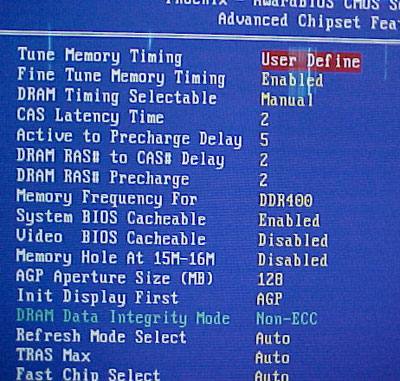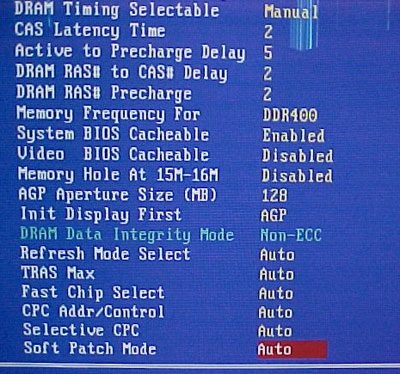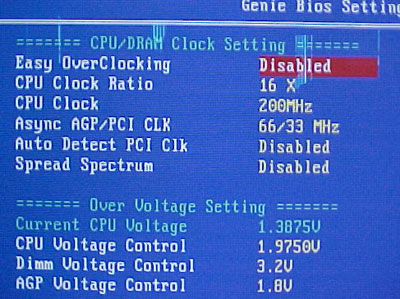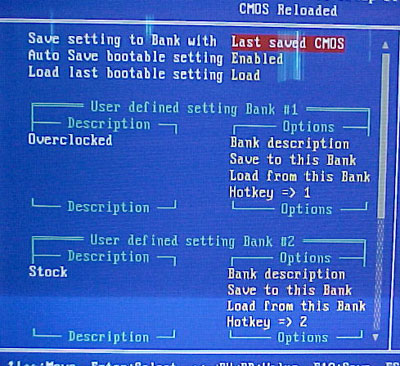

In the Advanced Chipset menu, DFI gives
end users total control of the memory subsystem. There are switches here that
are not available with normal motherboards, like TRAS MAX, CPC AddrControl and
Selective CPC! If you're a hardcore tweaker you're going to be in
heaven!

DFI's EasyOverclocking function works quite well if you'd like to let the system do the work
for you. The BIOS includes multiplier adjustments, but no matter what we set the
multiplier to, it stayed at 16x - not surprising considering we're using a retail Pentium
4 540 processor.
The boards' FSB can be tuned from 200-400 MHz in
1 MHz increments. You can set the AGP/PCI at various speeds, although it's recommended you
set it to 66/33. CPU voltage can go as high as 1.975V, although
you would not want to do that unless you were already using a very serious cooling
solution on the processor. Memory voltage can be raised to 3.2V, which should be
good enough for most people. Last but not least, AGP voltage can be increased to as
high as 1.8V.

DFI is very proud of its innovative CMOS Reloaded
feature. Basically, what CMOS reloaded does is allow
you to record your favorite BIOS settings, and restore them on a whim. It's great for
the overclocker who wants to pump out some amazing benchmarks for forum screen shots, then
slow down their system for everyday use. In fact, during the testing
of the DFI 875P-T I found the CMOS Reloaded feature extremely useful!
Next up, the
benchmarks.
